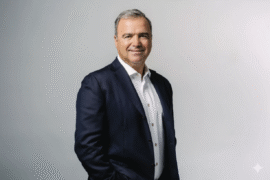This article may contain references to products or services from one or more of our advertisers or partners. We may receive compensation when you click on links to those products or services. Nonetheless, our opinions are our own.
The information presented in this article is accurate to the best of our knowledge at the time of publication. However, information is subject to change, and no guarantees are made about the continued accuracy or completeness of this content after its publication date.
Transforming your financial future starts with a fundamental step: establishing clear, actionable goals. Whether you’re aiming to pay off debt, boost your savings, or simply gain better control over your spending, having a roadmap empowers you to make smarter, more confident decisions. You’ll explore the essential components of financial goal-setting, from creating a personalized budget to identifying unnecessary expenses and investing wisely. With practical strategies, motivational tips, and easy-to-follow examples, this article will help you build a strong financial foundation and stay on track toward lasting stability and growth.
- Setting Clear Financial Goals to Ignite Your Journey
- Crafting a Realistic Budget That Works for You
- Identifying and Eliminating Unnecessary Expenses
- Building an Emergency Fund for Financial Peace of Mind
- Where to Save for Short-Term Financial Goals
- Exploring Smart Investment Options for Quick Growth
- Consider Working with a Fiduciary
- Staying Motivated and Tracking Your Progress Over Time
- Frequently Asked Questions
- Recommended Reads
Setting Clear Financial Goals to Ignite Your Journey
Setting clear financial goals is essential for transforming your financial landscape. By defining what you want to achieve, you’re taking the all-significant first step on your journey to financial freedom. Think about what matters most to you and establish objectives that are specific, measurable, achievable, relevant, and time-bound (SMART). This clarity will not only motivate you but also provide a roadmap for your decisions and actions.
Consider breaking down your goals into manageable short-term ones, such as:
Creating a budget: Start tracking your income and expenditures to identify where you can cut back.
Building an emergency fund: Aim to save three to six months’ worth of living expenses in a separate account.
Paying off debt: Focus on high-interest debts first, employing the snowball or avalanche method.
Increasing your income: Explore side gigs, freelancing, or negotiating for a raise at your job.
Investing in knowledge: Take a course or read books to enhance your financial literacy.
This approach will not only revamp your finances quickly but also set you on the path to achieving your long-term aspirations.
| Method | Timeframe | Risk Level |
|---|---|---|
| Savings Account | Short-term | Low |
| Stock Market Investment | Long-term | Medium to High |
By engaging with these actionable steps and comparing your options, you’ll be well on your way to strengthening your financial foundation.
Crafting a Realistic Budget That Works for You
Creating a budget that suits your financial landscape doesn’t have to be daunting. Start by focusing on your income and your expenses. List your sources of income and categorize your monthly expenses into fixed (like rent or loans) and variable (like groceries or entertainment). This will give you a clear snapshot of where your money is going and what you can adjust. Don’t forget to set aside a portion for savings; think of it as paying yourself first. Consider using tools like budgeting apps or simple spreadsheets to track these insights easily.
Next, set realistic spending limits within each category. Make sure to account for unexpected costs—a buffer or an emergency fund can help cushion any financial surprises. Rather than feeling restricted, view your budget as a guiding tool that empowers you to make informed decisions about your spending and savings. Remember, your budget is a living document; revisit and adjust it monthly based on your financial goals and lifestyle changes. Take advantage of the following strategies:
Automate savings to your bank account monthly
Prioritize debt repayment strategies
Track your progress with regular check-ins
| Budget Category | Monthly Limit |
|---|---|
| Housing | $1,200 |
| Groceries | $300 |
| Transportation | $150 |
| Entertainment | $100 |
| Savings | $250 |
Identifying and Eliminating Unnecessary Expenses
To effectively transform your financial landscape, it’s essential to take a hard look at your spending habits and identify areas where you can trim the fat. Start by analyzing your monthly expenses. Create a simple list that categorizes your spending, such as:
Essentials: Rent, groceries, utilities
Non-essentials: Dining out, subscriptions, entertainment
Savings: Emergency fund, retirement contributions
Once you’ve categorized your expenses, pinpoint items that can be reduced or eliminated. For example, can you cut out that streaming service you hardly use or limit your takeout dinners? Frequently, small changes can accumulate to significant savings. Consider creating a table to track these findings:
| Expense | Monthly Cost | Suggested Action |
|---|---|---|
| Streaming Service | $15 | Cancel |
| Gym Membership | $50 | Switch to Free Classes |
| Dining Out | $100 | Limit to Twice a Month |
When you actively seek to eliminate unnecessary expenses, you’ll free up funds for what truly matters: saving and investing in your future. And as you see those numbers change, you will feel the shift in your financial confidence.
Building an Emergency Fund for Financial Peace of Mind
Creating a safety net for yourself can be one of the most empowering financial decisions you make. An emergency fund not only helps you avoid slipping into debt during unexpected situations, but it also grants you the peace of mind to tackle financial goals with confidence. Start by setting a realistic savings goal, typically equivalent to three to six months of living expenses. This may seem daunting at first, but breaking it down into manageable steps can make the process feel much more achievable.
To build your emergency fund effectively, consider the following approaches:
Set up automatic transfers: Decide on a specific amount to transfer from your checking to your savings account each month.
Cut back on non-essential spending: Review your budget and identify areas where you can temporarily reduce expenses.
Use windfalls wisely: Tax refunds, bonuses, or monetary gifts are excellent opportunities to boost your savings.
Here’s a simple strategy to track your progress:
| Month | Amount Saved | Total Fund |
|---|---|---|
| 1 | $100 | $100 |
| 2 | $150 | $250 |
| 3 | $200 | $450 |
By maintaining a clear plan and celebrating each small victory, you’ll find yourself steadily moving toward financial security. You’ve got this—each dollar saved is a step closer to empowered financial living.
Voted "Best Overall Budgeting App" by Forbes and WSJ
Monarch Money helps you budget, track spending, set goals, and plan your financial future—all in one app.
Get 50% OFF your first year with code MONARCHVIP
Where to Save for Short-Term Financial Goals
When it comes to saving for short-term financial goals, choosing the right place to save your money is crucial. For short-term goals like a vacation, down payment on a car, or home renovations, consider keeping your funds easily accessible in a high-yield savings account or a money market account. These accounts offer higher interest rates than traditional savings accounts while still providing liquidity for when you need to access the funds quickly. Additionally, certificates of deposit (CDs) can be a good option if you’re certain about not needing the money for a specified period.
Exploring Smart Investment Options for Quick Growth
When it comes to fast-tracking your financial growth, there are several smart investment options that you can consider to revitalize your financial situation swiftly. While traditional investments like stocks and bonds play a significant role in long-term planning, focusing on short-term growth can yield notable results if you know where to look. Here are some avenues worth exploring:
High-Yield Savings Accounts: These accounts offer better interest rates than standard savings accounts, allowing your money to grow while maintaining liquidity.
Index Funds: Investing in low-cost index funds can provide broad market exposure, and since they are designed to mirror market performance, they often yield better returns than actively managed funds over the short term.
Crowdfunding Real Estate: Platforms that allow you to invest in real estate projects provide the possibility for relatively quick returns through rental income and property appreciation.
Peer-to-Peer Lending: This option allows you to lend money directly to individuals or small businesses, often resulting in higher returns compared to traditional savings.
While exploring these options, it’s important to keep a keen eye on your risk tolerance and investment horizon. A quick comparison of potential returns versus risks can help you make informed decisions.
| Investment Type | Expected Return | Risk Level |
|---|---|---|
| High-Yield Savings Account | 1–2% | Low |
| Index Funds | 7–10% | Moderate |
| Crowdfunding Real Estate | 8–12% | Moderate to High |
| Peer-to-Peer Lending | 5–15% | High |
Consider Working with a Fiduciary
Considering the various avenues for short-term financial growth can be a strategic move to revitalize your financial situation swiftly. High-yield savings accounts, index funds, crowdfunding real estate, and peer-to-peer lending are all promising options to explore. Each investment type offers different expected returns and risk levels, so it’s crucial to assess your risk tolerance and investment horizon before diving in. Working with a fiduciary can also provide valuable guidance in making informed decisions tailored to your financial goals.
Staying Motivated and Tracking Your Progress Over Time
Building a strong financial foundation requires consistent effort, and staying motivated through this journey is crucial. One effective way to keep your spirits high is by setting up a progress tracking system. Consider creating a simple spreadsheet to monitor your savings, debt progress, and expense management. This visual representation allows you to see how far you’ve come, which can be incredibly motivating. Here are some tips to maintain that momentum:
Celebrate small wins: Take time to acknowledge your achievements, no matter how minor they may seem. Each step forward is a reason to feel proud.
Set reminders: Use calendar alerts or sticky notes to remind yourself of your goals and progress. Visibility can ignite your determination.
Engage with a community: Join online forums or social media groups that focus on financial empowerment. Sharing your journey and hearing successes from others can reignite your passion.
Moreover, keep your goals front and center. A clear, visual representation of your financial health can be incredibly powerful. Below is a sample table to help you structure your progress tracking:
| Month | Savings Increase | Debt Reduction |
|---|---|---|
| January | $200 | $150 |
| February | $300 | $200 |
| March | $400 | $250 |
Regularly reviewing this table will help you stay accountable. It also serves as a motivational reminder that progress doesn’t happen overnight, but with commitment and attention, you will reach your financial goals.
Frequently Asked Questions
What are the key benefits of setting short-term financial goals?
Setting short-term financial goals allows you to create achievable milestones that contribute to long-term financial success. These goals help you stay motivated, build confidence in managing your finances, and establish healthy financial habits. Additionally, they provide a clear roadmap, making it easier to track your progress and adjust your strategies as needed.
What is the first short-term goal I should focus on to revamp my finances?
The first goal to consider is creating or revamping your budget. By assessing your income and expenses, you can identify areas where you can cut back and allocate more towards savings or debt repayment. A well-structured budget puts you in control of your finances and sets the foundation for your financial transformation.
How can I prioritize paying off debt effectively?
Start by listing all your debts, including interest rates and minimum payments. Prioritize paying off high-interest debts first, as they cost you more over time. You can also employ strategies like the snowball method, where you focus on the smallest debts first to gain momentum. Setting a specific timeline for paying off debt can also keep you accountable.
What savings goal should I aim for in the short term?
Aim to build an emergency fund that covers three to six months’ worth of living expenses. This cushion provides financial security and peace of mind in case of unexpected events. Even saving a small amount each month can add up over time, helping you reach your goal faster.
How can I improve my financial literacy quickly?
Start by dedicating time to read personal finance books, follow finance blogs or podcasts, and explore online courses. Engaging with financial communities, whether online or in person, also exposes you to diverse perspectives and strategies. Set a goal to learn about a specific topic each week to keep your knowledge-building momentum.

Reviewed and edited by Albert Fang.
See a typo or want to suggest an edit/revision to the content? Use the contact us form to provide feedback.
At FangWallet, we value editorial integrity and open collaboration in curating quality content for readers to enjoy. Much appreciated for the assist.
Did you like our article and find it insightful? We encourage sharing the article link with family and friends to benefit as well - better yet, sharing on social media. Thank you for the support! 🍉
Article Title: Short Term Financial Goals: Quick Wins to Turn Your Finances Around
https://fangwallet.com/2025/05/29/short-term-financial-goals/The FangWallet Promise
FangWallet is an editorially independent resource - founded on breaking down challenging financial concepts for anyone to understand since 2014. While we adhere to editorial integrity, note that this post may contain references to products from our partners.
The FangWallet promise is always to have your best interest in mind and be transparent and honest about the financial picture.
Become an Insider

Subscribe to get a free daily budget planner printable to help get your money on track!
Make passive money the right way. No spam.
Editorial Disclaimer: The editorial content on this page is not provided by any of the companies mentioned. The opinions expressed here are the author's alone.
The content of this website is for informational purposes only and does not represent investment advice, or an offer or solicitation to buy or sell any security, investment, or product. Investors are encouraged to do their own due diligence, and, if necessary, consult professional advising before making any investment decisions. Investing involves a high degree of risk, and financial losses may occur including the potential loss of principal.
Source Citation References:
+ Inspo
There are no additional citations or references to note for this article at this time.












































